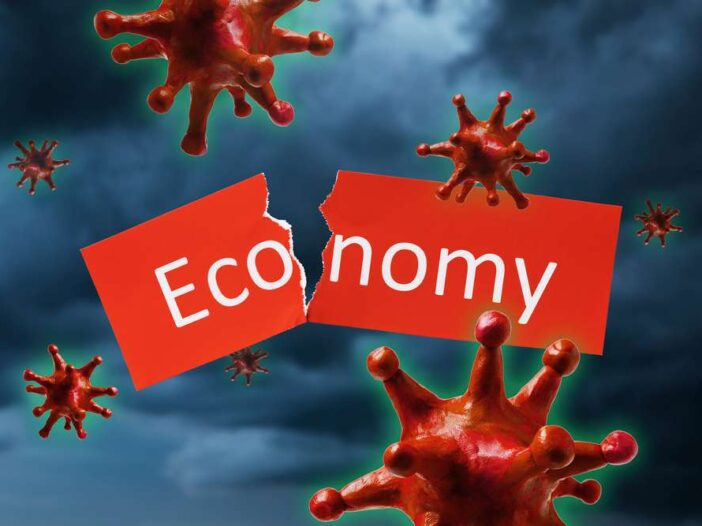The economy remains under lockdown, although some states are beginning to relax restrictions. As with so many other aspects of American life, there’s been a red state/blue state divide.
Red states (republican) are generally more willing to reopen their economies, while harder-hit coastal blue states (democrats) are generally more reluctant to open theirs.
Regardless, the economic consequences of the lockdown have been devastating, and we’ll be feeling their effects for a very long time.
We’ll also be feeling the effects of the massive monetary and fiscal responses to the crisis for a long time.
There are so many government ‘stimulus’ programs underway to deal with the New Depression it’s hard to keep track.
Here comes the multitrillion-dollar spending spree
The Federal Reserve has at least 10 asset purchase programs going including purchases of corporate debt, Treasury debt, municipal bonds, commercial paper, mortgages, and more.
Many of these are being done in a ‘special-purpose vehicle’ using US$425 billion given to the Fed by the US Treasury as a kind of Fed bailout. (Of course, the US Treasury money comes from the taxpayers, so you’re paying for all of this.)
Regardless of the legal structure, the Fed is on its way to printing US$5 trillion of new money on top of the US$5 trillion it has already printed to keep the lights turned on at the banks.
On the fiscal side, Congress has authorised US$2.2 trillion of new spending on top of the baseline US$1 trillion deficit for fiscal year 2020, and just authorised another US$600 billion last week.
A new bill for US$1.5 trillion of added spending is now being debated. Added together, that’s US$5 trillion of deficit spending for this year, and possibly more next year.
Meanwhile, stimulus supporters hope that the cheques Americans are getting from the government will give the economy a boost by way of increased consumer spending.
But a recent survey showed that 38% of recipients saved the money and 26% paid off debt.
So, the stimulus really isn’t stimulating. Its main effect is to increase the deficit and the national debt.
But don’t worry, say the supporters of Modern Monetary Theory (MMT).
We know how to stimulate the economy and who cares about the debt? It hasn’t been a problem yet and we can expand it a lot more…
[conversion type=”in_post”]
Century-old idea treated like new concept
Until a few months ago, MMT was a quirky idea known to very few and understood by even fewer.
It actually wasn’t modern (the idea has been around for over 100 years) and it wasn’t much of a theory because there was no way to test it in a controlled environment.
The basic idea is that the US government could merge the balance sheets of the US Treasury and the Federal Reserve and treat them as if they were a consolidated entity. (That’s not legally true, but never mind.)
The US Treasury could spend as much money as it wanted on anything it wanted.
MMT asks, if the US Treasury doesn’t spend money, how are people supposed to earn any?
Ideas like hard work, innovation, and entrepreneurship don’t enter the discussion. In MMT, all wealth comes from the government and the more they spend, the richer we get.
The US Treasury finances this spending by issuing bonds. That’s where the Fed comes in.
If the private sector won’t buy the bonds or wants too high an interest rate, the Fed can just crank up the printing press, buy the bonds with money created from thin air, stick the bonds on its balance sheet, and wait.
So, the Fed can just give the US Treasury an unlimited line of credit to spend as much as it wants…
When the bonds come due in 10 or 30 years, the Treasury can repeat the process and use new printed money to pay off the old printed money.
It all sounds nice in theory, but it’s an invitation to disaster.
If inflation breaks out, it will be too late to get it under control. You can’t just flip a switch. Inflation is like a tiger. Once it gets out of its cage, it’s very difficult to get it back in.
If confidence in the dollar is lost (something the Fed and Treasury can’t control), hyperinflation could wreck the economy.
That could lead to social unrest, riots, and looting, especially if the wealth disparities created by the Fed’s support of the stock market continue to grow.
Would there be any winners if MMT ran off the rails?
There would be one big winner — gold.
|
All the best, |
 |
|
Jim Rickards, |
PS: In a brand-new report titled ‘The Looming Aussie Recession and How to Survive It’, Nick Hubble reveals why a recession in Australia is inevitable and three steps to recession-proof your wealth. Click here to receive your free report.

